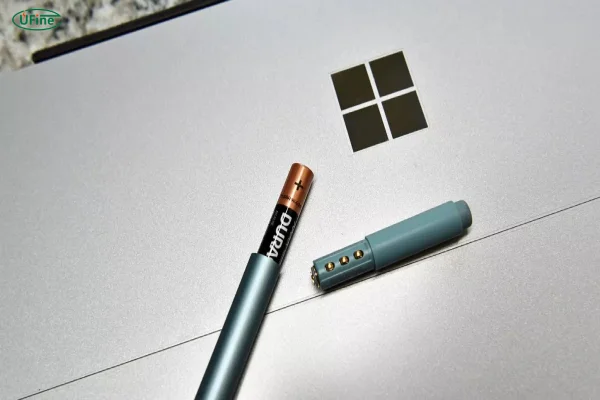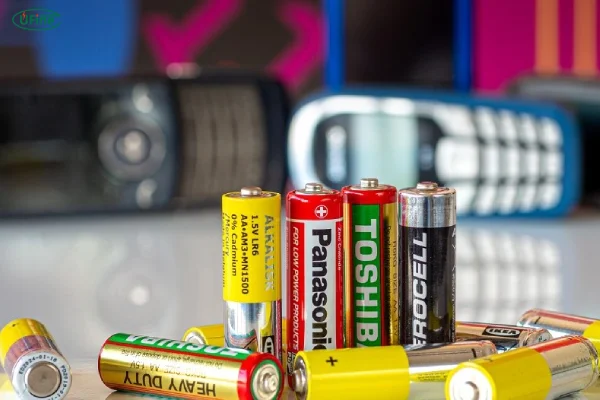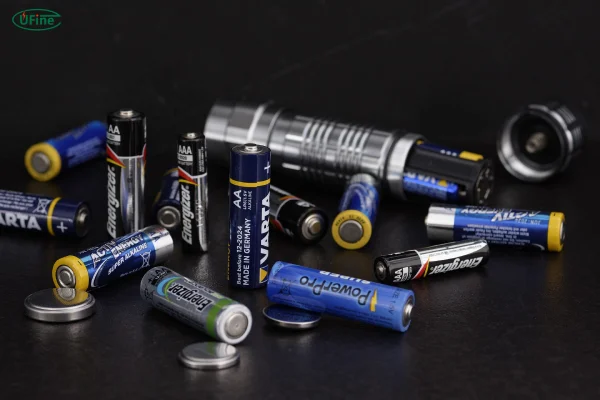When you think about powering your devices, you might immediately think about the commonly used AA, AAA, or 9V batteries. However, another type that often gets overlooked is the pencil battery. Pencil batteries, often referred to as AA-size batteries, are a crucial component for many electronic gadgets, toys, and other small devices.
But how much do you really know about pencil battery voltage? How does it affect the performance of your device, and why is it so important to choose the right type?
In this article, we will explore everything you need to know about pencil battery voltage, from the types of pencil batteries to the factors that influence their performance. We’ll also dive into why understanding battery voltage is crucial when it comes to selecting the right battery for your needs.
Part 1. What is a pencil battery?
A pencil battery, also known as an AA battery, is one of the most widely used types of batteries in everyday electronic devices. The term “pencil battery” comes from the battery’s cylindrical shape, which is similar in size and shape to a pencil. Despite being commonly referred to as an AA battery, the term “pencil battery” can sometimes also describe other small cylindrical batteries, although it’s most often associated with the standard AA-size.
The pencil battery is typically composed of a single cell, which provides a nominal voltage of 1.5V. This voltage level is ideal for powering a range of low-to-medium power devices, including remote controls, flashlights, toys, and clocks.
Characteristics of a Pencil Battery
-
Standard Size: The pencil battery is usually 50.5 mm (1.99 inches) long and 14.5 mm (0.57 inches) in diameter. This size makes it easy to fit into a variety of gadgets, particularly household devices and small electronics.
-
Voltage: The standard pencil battery provides a 1.5V output, which is the most common voltage for single-cell batteries used in everyday electronics. However, voltage can vary slightly depending on the battery’s chemistry.
-
Chemistry: Pencil batteries can be made from a variety of materials, including alkaline, lithium, and zinc-carbon. The most common type is alkaline, which provides reliable power and is widely used in consumer electronics. Lithium AA batteries provide better performance in extreme temperatures and have a longer shelf life, while zinc-carbon batteries are less expensive and commonly used in low-drain devices.
-
Capacity: The capacity of a pencil battery refers to how much energy it can store and is usually measured in mAh (milliampere-hours). While alkaline AA batteries typically have a capacity of 2,000–3,000 mAh, lithium AA batteries often have higher capacity and last longer.
-
Performance: A pencil battery generally performs well in low-drain devices but may struggle with high-drain devices. Batteries like lithium AA offer better performance and longer life in devices such as digital cameras or high-power flashlights.
Part 2. How does pencil battery voltage affect device performance?
The voltage of a pencil battery plays a significant role in how effectively a device operates. Here are a few ways that pencil battery voltage affects device performance:
-
Power Consistency: Devices require a consistent flow of electricity to function properly. If a battery provides too high or too low of a voltage, it may cause the device to malfunction. A pencil battery with 1.5V provides the right amount of voltage for many common household devices, ensuring a steady power flow.
-
Battery Life: The voltage also impacts how long the battery can power a device before needing replacement. If a device is designed to work with 1.5V batteries, using a lower voltage (e.g., 1.2V from rechargeable batteries) may result in shorter battery life or even cause the device to stop working.
-
Device Compatibility: Some devices are designed to work with specific voltages. Using a 1.5V pencil battery in a device designed for 3V or higher could lead to underperformance or malfunction. It’s essential to always match the voltage requirement of the device with the right pencil battery.
Part 3. Types of pencil batteries
Pencil batteries come in several different sizes and compositions. The most common type is the AA battery, but they can also come in various voltages and materials. Below are the key types of pencil batteries:
-
AA Alkaline Batteries: These are the most common pencil batteries you’ll find. They are inexpensive and widely available, providing a 1.5V output. AA alkaline batteries are used in a wide range of devices, from remote controls to toys.
-
AA Rechargeable Batteries (NiMH): Nickel-Metal Hydride (NiMH) rechargeable pencil batteries are a popular choice for people looking to reduce waste. These rechargeable batteries have a slightly lower voltage (usually 1.2V), but they can be recharged multiple times. They tend to last longer in devices with low power demands.
-
Lithium AA Batteries: These batteries provide 1.5V but are more powerful and longer-lasting than traditional alkaline batteries. They are suitable for high-drain devices like digital cameras. Lithium AA batteries tend to perform better in extreme temperatures.
-
Carbon Zinc AA Batteries: These are a less common type of pencil battery but are still used in certain devices. They also provide 1.5V but have a lower capacity compared to alkaline or lithium batteries.
-
Zinc-Carbon Batteries: These batteries are typically found in low-drain devices. They offer the same voltage as regular alkaline batteries but are less efficient and have a shorter lifespan.
Alkaline vs. Carbon-Zinc vs. Lithium Batteries: A Complete Guide
Part 4. How to choose the right pencil battery voltage?
Choosing the right pencil battery voltage depends on the requirements of your device. Here are a few tips to ensure you select the correct battery for your needs:
-
Check the Device Specifications: Most devices will specify the required voltage. It’s essential to choose a pencil battery that meets this voltage for optimal performance. For example, a device requiring 3V will need two 1.5V batteries (such as AA or AAA).
-
Consider Battery Life: If you need a long-lasting solution, choose a lithium pencil battery for extended power, or opt for rechargeable NiMH batteries for continuous use. Alkaline batteries tend to have a shorter lifespan but are more affordable.
-
Evaluate Temperature Conditions: If your device is exposed to extreme temperatures, a lithium pencil battery may be the best option. These batteries perform well in both hot and cold environments.
-
Understand Your Power Needs: High-drain devices, such as digital cameras, may require a battery with more power output. Consider using lithium or high-capacity rechargeable batteries for these types of devices.
Part 5. Understanding battery capacity and voltage ratings
While voltage is important, it’s also crucial to understand battery capacity and how it affects performance. Battery capacity, measured in mAh (milliampere-hours), indicates how much energy a battery can store. The higher the mAh rating, the longer the battery will last in a device.
For example:
- An AA alkaline battery typically has a capacity between 2,000–3,000 mAh.
- A NiMH rechargeable AA battery has a capacity of around 1,800–2,500 mAh.
- Lithium AA batteries often have a higher capacity and provide better performance at extreme temperatures.
It’s also important to note that voltage and capacity should be matched to your device’s energy demands. A high-capacity battery with a lower voltage may not perform as well in a high-drain device, and conversely, a lower-capacity battery with the wrong voltage could cause a malfunction.
Part 6. How pencil battery voltage affects rechargeable vs. non-rechargeable options
The decision between rechargeable and non-rechargeable pencil batteries often comes down to the voltage and capacity requirements of your device.
-
Non-rechargeable batteries, like alkaline or lithium AA batteries, provide a consistent voltage of 1.5V and are often used in devices that require a moderate amount of power. They have a high energy density, meaning they deliver a lot of power before they deplete. However, once drained, they need to be replaced.
-
Rechargeable batteries (typically NiMH) have a slightly lower voltage of 1.2V. They can be recharged hundreds of times but tend to provide lower capacity than non-rechargeable batteries. This means they may not last as long on a single charge but are cost-effective over time due to their reusability.
Understanding the voltage and capacity needs of your device is critical when deciding between rechargeable and non-rechargeable pencil batteries.
Part 7. Pencil battery voltage and device compatibility
Ensuring compatibility between your pencil battery voltage and your device is critical to preventing malfunctions or poor performance. While most devices use 1.5V AA batteries, some advanced devices require different voltages. For example, a digital camera may need 1.5V lithium batteries for consistent high power output, while a basic remote control may only need a 1.5V alkaline battery.
If you use a pencil battery with a voltage higher than what your device can handle, you risk damaging the internal components of the device. On the other hand, using a battery with lower voltage could result in inadequate performance or failure to power the device at all.
Related Tags:
More Articles

How to Choose the Best Floor Scrubber Battery for Commercial Cleaning?
Selecting the ideal floor scrubber battery ensures a long runtime, rapid charging, and minimal maintenance for efficient commercial cleaning operations.
Battery for Blower vs Battery for Leaf Vacuum: Which One Should You Choose?
Battery for blower vs leaf vacuum—learn the key differences in power, fit, and runtime to choose the right battery for your outdoor tool needs.
How to Choose the Right Battery for Blower?
Choosing the right blower battery? Consider voltage, capacity, chemistry & usage. This guide helps match the best battery for peak performance.
How to Choose the Best Insulated Battery Box for Lithium Batteries?
Choosing the Best Insulated Battery Box for Lithium Batteries? Discover key factors such as size, material, and safety for optimal protection and performance.
7 Critical Elements on a Lithium Battery Shipping Label
What must be on a lithium battery shipping label? Learn 7 key elements to ensure safety, legal compliance, and correct handling across all transport modes.






